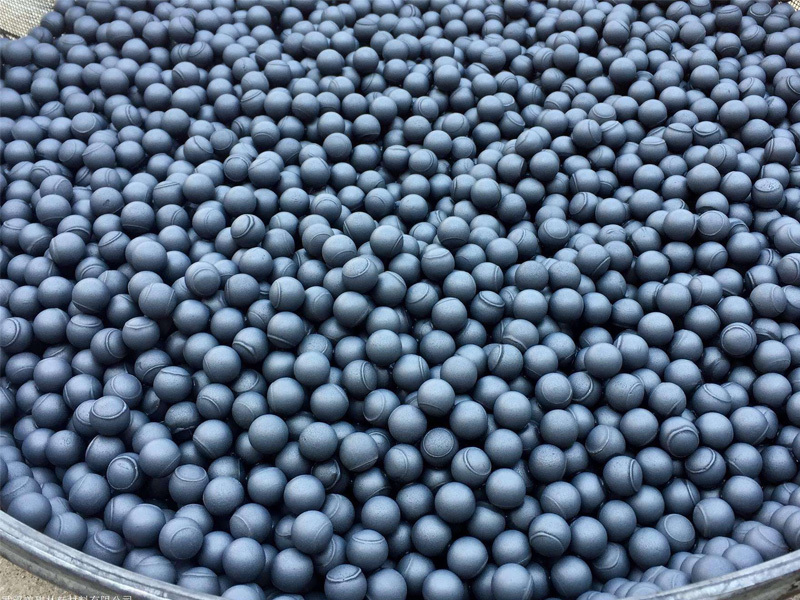What are the performance advantages of recrystallized silicon carbide?
Release time:
2022-08-31
Recrystallized silicon carbide What are the performance advantages?

Every product must have its own positioning, and it can play a very important or even irreplaceable role in a specific field. For example, "recrystallized silicon carbide (R-SiC)" is much more low-key than "reaction-bonded silicon carbide", because its production threshold is very high. Only a few ceramic enterprises in China have the ability to produce it, but its excellent thermal stability makes it have a strong presence in applications at 1350~1600. So what are the performance advantages of recrystallized silicon carbide?
What are the performance advantages of recrystallized silicon carbide?
The structure and performance of recrystallized silicon carbide are significantly different from reaction-bonded silicon carbide, pressureless-sintered silicon carbide, and self-bonded silicon carbide.
Comparison of different silicon carbide material preparation processes
It can be found that recrystallized silicon carbide does not shrink during sintering, so it is porous inside and has many pores. Although it is easily affected by high temperatures, it will increase with increasing temperature. For example, the flexural strength of recrystallized silicon carbide at 1400 is 15~20% higher than that at room temperature.
Recrystallized silicon carbide Compared with other silicon carbide materials, recrystallized silicon carbide has a thermal conductivity more than 5 times higher than that of general silicon carbide refractory materials due to its clean interface. And due to its low thermal expansion coefficient, recrystallized silicon carbide has high thermal shock resistance, can resist rapid cooling and heating shocks, and reduce heat storage. Due to its high purity and no intermediate compounds, it has strong oxidation and erosion resistance, which can greatly extend its service life.
Recrystallized silicon carbide: What is the density of silicon carbide?
The density of silicon carbide is 3.2 g/cm³. Silicon carbide is an inorganic substance with the chemical formula SiC. It is made by high-temperature smelting of raw materials such as quartz sand, petroleum coke (or coal coke), and sawdust (salt needs to be added when producing green silicon carbide) in a resistance furnace. Silicon carbide is also a rare mineral in nature, moissanite.
Recrystallized silicon carbide: Among non-oxide high-tech refractory materials such as carbon, nitrogen, and boron, silicon carbide is a widely used and economical material, which can be called diamond sand or refractory sand. The industrially produced silicon carbide in China can be divided into black silicon carbide and green silicon carbide, both of which are hexagonal crystals, with a specific gravity of 3.20~3.25 and a microhardness of 2840~3320 kg/mm.
Recrystallized silicon carbide What is the difference between it and reaction-bonded silicon carbide?
Reaction bonding is also called activated sintering or intensified sintering, which is different from intensified sintering. Activation refers to a sintering method that can reduce the sintering activation energy, so that the system can sinter at a lower temperature and faster speed, improving the function of the sintered body. Intensification generally refers to all sintering processes that can improve the sintering speed or enhance the function of the sintered body (through alloying or possibly suppressing grain growth). The quality of materials such as gray cast iron, cast iron, and ductile iron depends on the content of nodular silicon. The content of nodular silicon in gray cast iron and cast iron determines the strength of the quality, while the content of nodular silicon in ductile iron determines the quality of ductile iron in the later stage of plasticity. The main difference between reaction-bonded silicon carbide and recrystallized silicon carbide in manufacturing processes is the different temperatures used. Reaction bonding is about 1300 degrees, while recrystallization is about 1600 degrees. The processes are generally the same, that is, the sintering methods are different. Reaction bonding has a lower silicon infiltration sintering temperature, while recrystallization has a higher sintering temperature. The specific gravity of reaction bonding is higher than the usage temperature.




